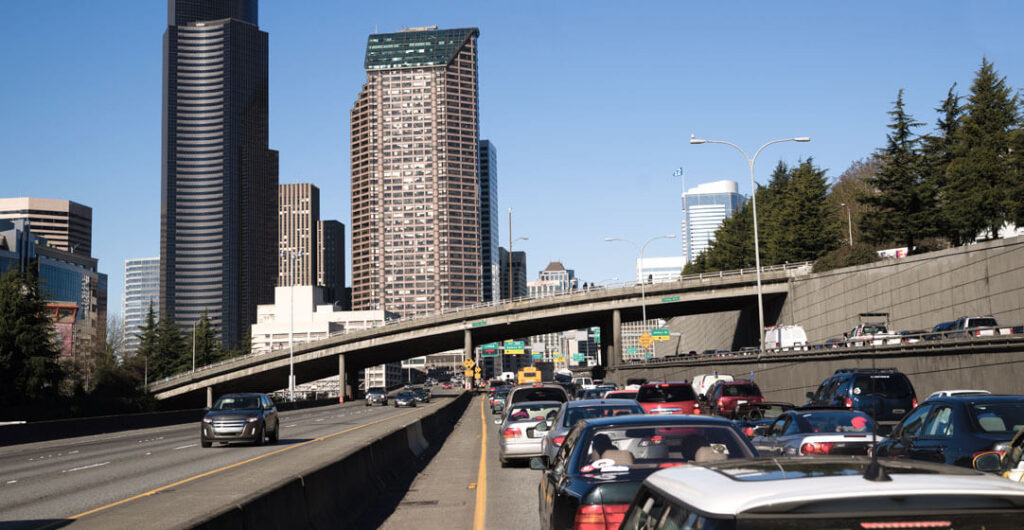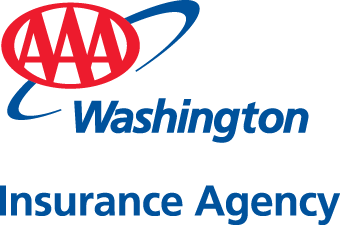Learn what to expect when insuring a new driver
Looking for car insurance for new drivers? You’ve come to the right place. In this article, we’ll share how to get the right type of insurance as a new driver, regardless of your age or experience level.
New drivers can be teens, young professionals, immigrants with no track record of driving in the U.S. (but plenty of driving experience), and older adults. But one thing all new drivers have in common is that they need car insurance to legally drive in Washington state and Idaho.
The good news is that if you are a new driver of any age, you can get car insurance. AAA Washington insurance agents regularly write policies for new drivers and can guide you through the process. You won’t be asked any special questions and you’re not required to fill out extra paperwork. However, all new drivers pay higher rates, especially teen drivers.

Why do new drivers pay more?
One reason you’ll be charged more as a new driver is you are an unknown. The insurance company has no data on your driving history. So, you’re assumed to be an inexperienced driver at a higher risk for accidents than an experienced driver with a good driving record.
Car insurance for new drivers is not that simple, though. Insurance companies use many different statistics to gauge a driver’s risk. Before you’ve driven a mile on a road, you will be lumped together with other new drivers with a similar profile.
Tip: AAA Washington can help you save on car insurance for new drivers with several national carriers, including Safeco, Progressive, Travelers and more. AAA can also add a new driver to an existing household policy, if there’s an insured driver in your home. Connect with a AAA agent to discuss your options.
Not all new drivers pay the same rates
Certain types of new drivers, especially male teens, will pay significantly more for insurance than other groups of new drivers. That’s because male drivers under the age of 19 have much higher accident rates than drivers over the age of 25.
Here are some factors that can affect the price of car insurance for new drivers:
- Gender. Men tend to pay higher insurance premiums than women due to higher average collision rates. While this is especially true for male teen drivers, males on average pay higher insurance rates than women regardless of their age or driving experience.
- Location. People who live in certain zip codes can pay higher rates than others. Insurance companies evaluate collision rates and crime in the area where you live, as it can increase your odds of accidents and car thefts. So, a new driver living in a major city will tend to pay higher average insurance rates than a new driver living in a quiet suburb or rural area.
- Vehicle type. Your vehicle’s value will directly affect the cost of any damage protection insurance you add — the more valuable the car, the more it costs to replace and repair, and the higher your premium. Also, some car models are more likely to be stolen than others, affecting the rate. The vehicle’s size and horsepower can also affect the cost of insurance. Big, powerful cars tend to be at a higher risk for accidents and cause more damage to other cars.
- Marital Status. If you’re a new driver and married, you may pay lower premiums for insurance than a new driver who is single. Married couples are viewed as more financially stable and safer drivers. Plus, a married new driver is usually added to a spouse’s existing policy. It’s almost always less expensive for a new driver to join an experienced driver’s existing policy than to obtain their own policy.
- Credit Score. You’ll probably pay a much higher insurance premium if you have a bad credit score. You might also pay more if you have little or no credit history. Statistics suggest that people with higher credit scores are safer drivers and file fewer claims.

How much does car insurance for new drivers cost?
Washington residents pay some of the highest auto insurance rates in the country. The average cost for one driver can range from $400-$800 annually to purchase the state minimum in liability insurance, and $1,400-$2,000 per year for full coverage (liability, collision and comprehensive). A new driver will pay at the top of this range, or much more.
The price of car insurance for new drivers depends on the company and the individual, which is why it’s important to review all your options with an insurance agent. Adding a young driver to an existing policy can more than double the cost of a premium, particularly if you’re adding a male teenager.
Tip: AAA members can save up to 8% on insurance. Connect with a AAA agent to learn more.
Can I get discounts on car insurance?
Yes, there are a couple of ways you can get discounts on car insurance for new drivers. Ask an agent about these options:
1. Maintaining a safe driving record. You can often qualify for a discount if you maintain a clean driving record for an extended period, roughly three years or so. However, insurers aren’t likely to drop the rates on anyone under the age of 25 without other factors.
2. Getting good grades. Several companies give discounts to teen drivers for maintaining good grades, typically a “B” average or higher. Progressive, for example, gives a 10% good student discount.
3. Taking a Driver Safety Course. Some insurance companies offer a generous discount for new drivers if you complete an approved defensive driving course. Not all insurers offer this discount; however, AAA partners Mutual of Enumclaw and Foremost Signature both do. Note, it’s not the same as taking driver education classes. It must be an approved safety course that typically takes four to 12 hours to complete.
Tip: In Washington state, teen drivers under the age of 18 must enroll in a new teen driving education course prior to obtaining a learner’s permit. You can’t learn to drive unless you enroll in the course.
4. Agree to mobile tracking. Some insurance companies give discounts after evaluating your driving habits and usage using apps. For example, Safeco will monitor your driving for 90 days. You can qualify for up to 5% to 30% discount after completing the program. Don’t forget to ask about these programs, especially if you work from home and don’t drive much.
5. Bundling your car insurance with other policies. Your car policy can be combined with several different policies, such as home or renter insurance. (Plus, AAA Washington members can save up to 8% when bundling insurance.) Connect with an insurance agent here to learn more.

What kind of insurance do I need?
All new drivers in Washington and Idaho must have insurance to drive. The three major categories are:
1. Liability insurance, which pays claims if you cause an accident that injures other parties or damages another person’s car or property. A minimum level of liability insurance is mandatory in Washington and Idaho.
2. Collision insurance, which covers damage to your car in an accident regardless of who is at fault, including another vehicle, an object (like a guardrail, pole) or a rollover. Collision insurance is optional, unless required by an auto loan.
2. Comprehensive insurance, which covers damage to your car in random acts that are out of your control, such as theft, vandalism, certain natural disasters or if you hit a deer or other large animal. Comprehensive insurance is optional, unless required by an auto loan.
Plus, drivers should consider buying these two optional types of insurance.
- Uninsured/underinsured motorist coverage protects you and your property if you are involved in an accident with an at-fault driver who is uninsured or underinsured. If you are injured, for example, this insurance can be used to pay for medical expenses and damage to your car.
- Personal injury protection can cover medical payments, lost wages and other essential services. This optional insurance is particularly useful for adults who might not be able to work for some time after an accident.

4 mistakes to avoid
There are 4 common mistakes you’ll want to avoid when shopping for car insurance for new drivers:
1. Buying the minimum level of insurance. You can legally drive in Washington and Idaho by obtaining a minimum level of liability coverage; however, the minimum level is usually not adequate if you are fault for an accident that causes injuries or property damage.
No one wants to injure others in an accident, but serious accidents do happen. If you (or your teen) are found liable for damages and you don’t have adequate insurance, you may have to pay thousands of dollars to the injured parties out of pocket. Plus, if you’re a new driver, you tend to be at a higher risk for accidents, so it’s even more crucial that you get adequate coverage. (See why you should consider buying the maximum amount of liability insurance here.)
2. Excluding a teen or a youthful driver from coverage on certain vehicles owned by the household. If you’re adding a dependent child to your policy, you may be tempted to limit your teen to the use of one car and exclude other vehicles to save money. Don’t do it. If your teen does borrow one of the other vehicles and gets into an accident, it won’t be covered. You could be found entirely liable for the damage and any injuries to other parties. (Plus, many insurance carriers won’t exclude other licensed household members from a policy.)
3. Setting a lower coverage limit on a new driver’s car. This mistake is related to the last two mentioned: Some people not only exclude a new driver from certain vehicles, but also lower the coverage limits to the minimum on the included vehicle. For example, say a household has three cars. You may have the maximum amount of liability coverage on your SUV and your spouse’s sportscar but have only bought the minimum amount of liability on the old Honda that you gave your teenage son to drive. Yet, your teenager is statistically much more likely to get into an accident.
4. Buying too much car for your experience level. Inexperienced drivers should choose their first car carefully. Compact or mid-sized sedans that are easy to drive and park are best. It’s not a good idea to start a new driver on a large truck or a high-horsepower car. Also, certain cars and trucks cost significantly more to insure than others.
Tip: Don’t forget to add the new drivers in your family to your existing AAA Washington membership for peace-of-mind on the road.

Who is considered a new driver?
A new driver doesn’t necessarily have to be a teen. In fact, studies suggest that teens and young adults are waiting longer to get their first driver’s license.
New drivers don’t have to be inexperienced drivers either. Adults who allow their driver’s license to lapse and stop driving for several years are treated as new drivers. Likewise, recent immigrants holding a valid U.S. driver’s license are usually considered new drivers even if they have decades of road experience in their country. Auto insurers typically only look at your U.S. driving history. One exception is Canada: U.S. insurers will accept driver records from Canada.
Most people’s first experience with insurance comes as new drivers in need of an auto policy. While insurance can be confusing, you don’t have to do it alone. AAA Washington is here to help. Our agents can help you get the right coverage. Don’t hesitate to call a AAA agent today.
—Written by AAA Washington staff
—Top photo: New Africa/AdobeStock

